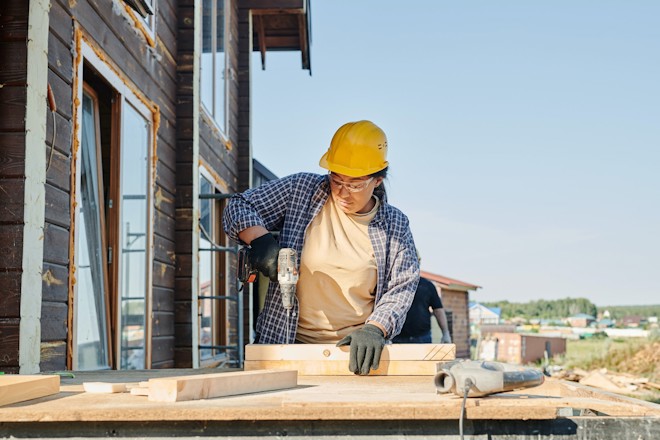Explaining the hard market and why insurance premiums are rising.


You may have seen your property insurance premium rising lately. This is due to us being in what is called a ‘hard market’.
The characteristics of a hard market include:
Several recent natural disasters and the economic downturn have brought about this situation. Underwriters are looking more closely at losses, safety records, and financials.
There are a number of other factors involved that are impacting upon the rate of premiums, but the two main ones at work are: the cost of rebuilding or repairs and the Insurers needing additional rate strength to balance their loss-making books. Add to that rising inflation and a host of other economic factors, it’s no wonder premiums are rising.
Most insurers had begun to lose money from their property insurance policies, following years of low premium rates and the incidence of large losses having steadily increased over time.
Global challenges
Building costs have shot up due to inflation, rising costs and global shortages of materials, and the supply challenges caused by BREXIT. In addition, the impact of the conflict between Russia and Ukraine – where 13 per cent of the UK’s steel imports are sourced, has led to price increases1. There have also been steep rises in the cost of fuel, hence transportation costs escalating2, combined with an increase in demand.
Logistics issues resulted in unprecedented shortages, delays and ultimately increases in prices of materials across the board3.
These soaring rebuild costs have meant many commercial properties, including surgeries, are now underinsured. That means there are a lot of vulnerable properties across the UK.
For insurance to be effective, properties need to be insured for the amount it would cost to rebuild them. But the rise in construction costs means that many buildings are now covered for just a percentage of that – potentially leaving many practices out of pocket should they have to make a claim.
The Royal Institution of Chartered Surveyors (RICS) recommends a review is carried out on a building’s reinstatement cost every three years or earlier, should significant alterations be made. This can often be done remotely via their digital service.
Whilst undoubtedly these higher rebuild costs are unfortunately leading to higher premiums, it’s important to appreciate that the increase in insurance premiums will be trivial compared to the potential insurance deficit and substantial losses, if a claim has to be made. While underinsurance may result in lower premiums paid by you as the policyholder, it is false economy.
Get a review
A review will help to ensure that you have the appropriate cover. It is especially important if you have extended or made any alterations to your practice, added new equipment or increased your drug inventory. We can include a reinstatement cost assessment (RCA) through RICS as part of this review. Ideally do this at least 4-6 weeks before your renewal date.
Regulation changes introduced by central government in relation to decarbonisation and ventilation to help the UK reach its 2050 net-zero targets, are also ironically increasing costs.
Additional factors impacting on insurance premiums include:
1. Rising inflation
Inflation is rising and according to the Consumer Prices Index, hitting 9.4% in June of 2022; the highest rate since records began. KPMG forecast average inflation over 2022 at 8.1%,
2. Cost of materials
The overall cost of materials is also rising. Figures from the BCIS Materials Cost Index show costs at a 40-year high and indications are that costs of raw materials are expected to more than treble in 2022.
Add to that the chronic labour shortage caused by Brexit and Covid, and we’re seeing supply chains in crisis2. According to data from the CII, UK insurers are looking at an increase of 9.6% to cover rebuild cost inflation.
3. Climate change
Climate change means more unpredictable and severe weather events. Insurance losses from Storm Eunice alone (February 2022) are predicted to be around £200-£350 million. When insurers are unable to predict future risks, reinsurance terms are harder to negotiate, with the costs being passed on to property owners. Plus, it’s not just losses in the UK that impact on loss ratios.
4. Changing methods of construction and design
The evolution of construction methods is also making an impact. Modern buildings are less able to withstand fires, floods and storms. Plus, the trend for open plan living and working makes it harder to contain any fires.
5. The pandemic
Since the COVID-19 pandemic hit the UK in 2020 we’ve seen rising inflation, severe business interruption, and increased insurance claims. Estimates suggest it has cost the insurance industry in excess of £200 billion. With such high pay-outs, UK insurers have had no choice but to buckle up and watch rates harden.
6. Unsustainable loss ratios
Finally, property insurance premiums have been artificially low for many years. As a result, insurers’ combined operating ratios, a measure of general insurance underwriting profitability, often exceeds 100%. A combined ratio measures the money flowing out of an insurance company as dividends, expenses, and loses. It is calculated by dividing the sum of claim-related loses and expenses by earned premium. If they exceed 100%, this means, the cost of providing property cover has been higher for insurers than the premium received. Insurers are now experiencing an increase in the number of claims being made and the cost of those claims.
Whilst these issues will no doubt continue into the future, it is a good time to speak to your insurer now, to review your cover.
Call us now to ensure that you are properly protected.
1 https://www.investmentmonitor.ai/sectors/construction/rise-material-costs-uk-construction-industry
2https://transportoperator.co.uk/2022/06/01/iru-call-for-action-as-fuel-prices-continue-to-bite/
3 https://www.ft.com/content/76be7676-879e-4304-95d5-6ae96c1e1507